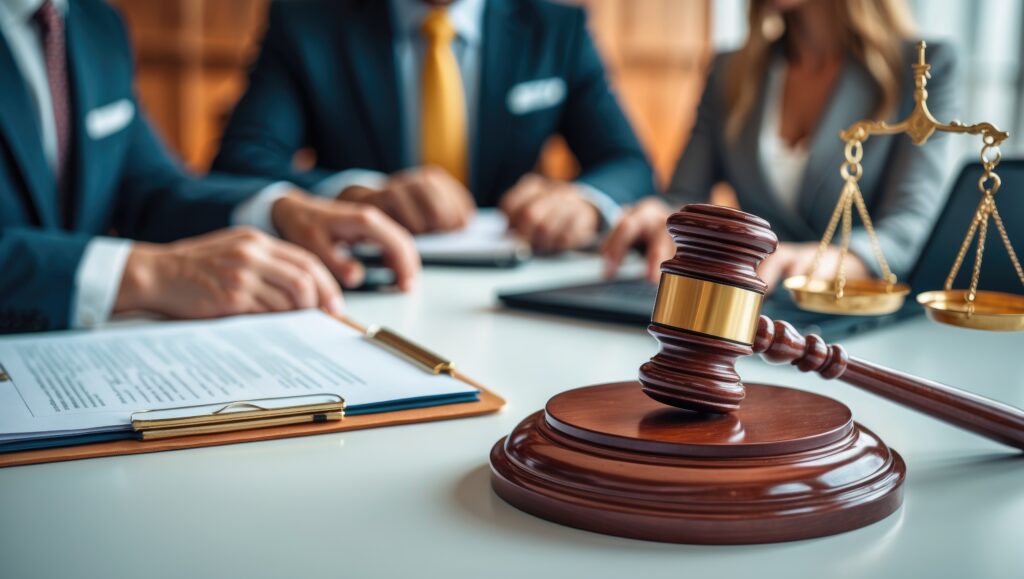You may have heard of collective enfranchisement in relation to residential flats, but what does it mean, and how do you know if you can use the right? The following is a brief summary to this area of law for leaseholders looking to acquire the freehold to their building.
So what is Collective Enfranchisement?
Collective enfranchisement is a legal term for the right of leaseholders to jointly acquire the freehold of a building, or part of a building, in which they hold a residential leasehold interest. The legal language, and the legal process, can seem intimidating and complex. However, the basis of the rights available to leaseholders can be summarised fairly simply.
In essence, a group of leaseholders will have the right to acquire the freehold from their landlord where they satisfy the qualifying criteria and where the legal claim process is followed.
Debunking the Jargon
As with many legal matters, there are certain words and phrases that are not commonly used in day-to-day language. However they have specific legal meanings and it is important that they are understood. Below is a brief glossary to some of the legal language applying to collective enfranchisement that will be used in this guide:
| Legal terms | Plain English |
| Collective Enfranchisement | Collective enfranchisement is a legal right for leaseholders to jointly acquire the freehold of the building in which they already hold a residential leasehold interest (together with intermediate leasehold interests and the common areas). |
| Freehold | This is the formal term for an estate in land that provides the holder of the estate with rights of ownership. |
| Freeholder | The owner of the freehold land. In the context of this article the freeholder will be the landlord of the building. |
| Leasehold | This is the term describing an estate in land that is granted by a lease providing the holder of the lease with rights of possession and use of the land. Flats are usually held as leasehold properties as the freehold is retained for purposes such as regularising ownership and maintenance of the structure of the building. |
| Leaseholder | Also known as a tenant, this is the person who owns a leasehold interest in land. |
| Qualifying leaseholder | To qualify for the collective enfranchisement rights a leaseholder must have a long residential lease (being a lease that was granted for a term of at least 21 years when first granted). If the lease was originally a shared ownership lease, to qualify as a long lease the owner must have “staircased” up to 100% ownership.
A leaseholder will no longer be classed as a qualifying leaseholder if they own more than two flats in the building. |
When will the Collective Enfranchisement right apply?
The right to collectively enfranchise applies where a self-contained building (or part of a building) contains at least two flats, the floor-space of the building does not comprise 25% or more non-residential space (such as shops or offices) and at least 2/3 of the flats are owned by qualifying tenants. To exercise collective enfranchisement rights at least half of the leaseholders are required to participate.
So for example: where there is a building that contains two flats, both owners will need to qualify and both will need to participate in the claim for collective enfranchisement. Where there is a block of flats with 10 apartments at least 7 of the leaseholders must be qualifying tenants, and a minimum of 5 of the qualifying leaseholders will need to be participants in the claim for collective enfranchisement. The right will not apply to a single flat located above a shop, or to a number of flats above a shop or commercial premises where the shop or commercial premises is ¼ or more of the floor space of the building.
How do I Exercise my Right to Collective Enfranchisement?
Prior to submitting a claim it is worthwhile to take advice from a solicitor and a surveyor. The role of the solicitor is to advise on whether the right of collective enfranchisement will apply, and if so they can represent the participating qualifying leaseholders throughout the claim process. Meanwhile, the surveyor will be able to advise on the premium (i.e. the price that the leaseholders should pay for the freehold) to put in the formal application to the freeholder.
There is a set process for enfranchisement that has been established by law. So, once the initial advice has been taken a formal application can be served on the freeholder. This will state that the collective enfranchisement rights are being exercised, and confirm the price that the leaseholders are willing to pay for the freehold. Following service of this initial notice there is a 2 month period in which the freeholder can serve a counter-notice stating whether they accept the claim, and if so, whether all of the terms in the initial notice (including the price) are agreed. If any terms are not agreed there is a further 2 month period in which the leaseholders and the freeholder can negotiate terms. Where agreement is not reached, there is a further 4 month period in which the freeholder or the leaseholder may apply to the relevant tribunal for them to make a decision on the claim. Negotiations can continue within this time. It is therefore worth taking into account that the process for collective enfranchisement can be a relatively lengthy process.
If agreement cannot be reached, and if the matter is referred to the tribunal, they will make a formal decision on the terms on which any enfranchisement claim should proceed. Following the determination of the tribunal in favour of the enfranchisement both parties should enter into a formal contract for the sale of the freehold and then proceed with the sale and purchase transaction.
When exercising these rights, leaseholders should be aware that they will be responsible for both their own legal and surveyor’s costs as well as the reasonable legal and surveyor’s costs of the freeholder. Should the matter be referred to the tribunal, each party will be responsible for their own costs from that point.
For specific legal advice on Collective Enfranchisement and any other leasehold enfranchisement rights, please contact us to speak to a member of our Real Estate Team.
This reflects the law at the date of publication and is written as a general guide. It does not contain definitive legal advice, which should be sought as appropriate in relation to a particular matter.








